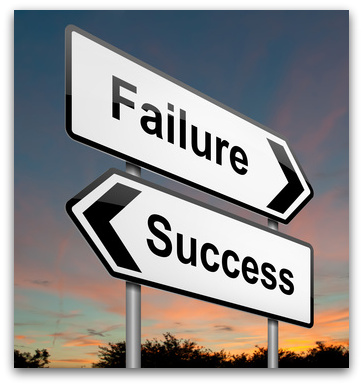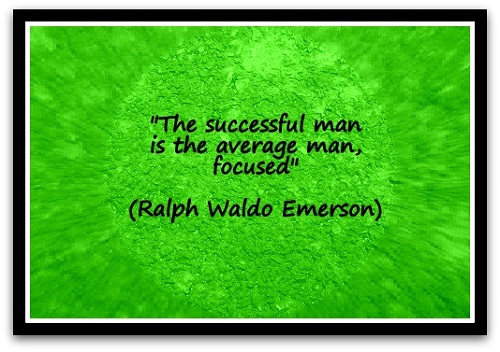Coaching Quote of the Day 7th August 2013

“Failure is the condiment that gives success its flavor.”
(Truman Capote)

“Failure is the condiment that gives success its flavor.”
(Truman Capote)

“Many of life’s failures are experienced by people who did not realize how close they were to success when they gave up.”
(Thomas Edison)
In today’s guest post leadership trainer and coach Brian Lumsdon looks at:

Now this might just be me, but don’t you think there’s a feel good factor around Britain again this summer? Perhaps it’s the prolonged spell of wonderful weather and maybe Andy Murray’s victory at Wimbledon has influenced the nation’s mood. Whatever the trigger, I sense an air of positivity amongst friends, family and the people I work with across the country.
So with this in mind you might be curious as to why I’ve chosen to talk about the topic of ‘failure’ today! It’s a subject that’s crept in and out of my thinking since the start of this summer, encouraged by some notable sporting successes and the role their ‘failures’ played in the success they enjoyed. So stay worry-free, I’d simply like to share my take on how we might embrace failure and help our clients do the same.
A seed was sown during a lecture I attended by Olympic swimmer Chris Cook, a commonwealth gold medallist. To the backdrop of a screen full of events and dates, Chris shared numerous ‘failures’ he had experienced over a five year period. The Olympics he missed because selectors thought he wasn’t good enough, the championships where he didn’t make the qualifying time. He explained to the audience with so much passion that he was as proud of these moments as he was about actually winning commonwealth gold medal.
To be more specific, he was as proud of himself when thinking about these moments of failure in the context of his focus.
I know we are often conditioned to a culture of deleting the negatives and accentuating the positives to achieve success. I do believe this can be really useful. But there seems to be something liberating, even energising, about acknowledging a failure and just continuing in the direction of our focus. I’ve used the word ‘focus’ here. You may prefer to describe this as your purpose, goal or best intention.
“Our greatest glory is not in ever falling, but in rising every time we fall” Confucius.
My summer failure-theme was cultivated by Justin Rose, who in June became the first English golfer to win the US Open for 43 years. In one of his post-tournament interviews he recounted the fact that when he first became a professional golfer Justin missed the cut TWENTYONE times in a row. (In these four day tournaments, ‘missing the cut’ means a player failed to reach a qualifying standard after the first two days and is therefore removed from the competition).
“If I missed the cut by six shots one week and by four the next, I would spin it in a positive light. I didn’t drill myself further into the ground.” said Rose. He also went on to say that days like that help remind him that winning is even more special.
So for some people, like Chris, just to understand our reaction to failure is in our own hands is enough. The fact we know we are in choice allows a more resourceful thought or reaction to appear without having to work at it. Others, like Justin, greatly benefit from spending a few moments cultivating a useful meaning or philosophy.
Throughout my coaching career I’ve worked with clients who have become stuck or even crippled by their own thinking of a failed event. This has applied to job interviews, delivering presentations, working with sales targets, relationships, parenting and countless other examples I could mention.
I’ve noticed that two patterns of thought typically play out for clients, often unconsciously, after an event that didn’t go to plan. They often get stuck in either the ‘what if…’.or ‘blame’ patterns of thinking.
Either way, these thought patterns create a negative state of mind and affect our entire physiology. And of course from this unresourceful state it is little wonder we either don’t perform next time or we do everything in our power to avoid the same situation next time.
Benjamin Zander, Conductor of the Boston Philharmonic Orchestra and Leadership guru, insists his students use a novel approach whenever they make a mistake. Their natural tendency would be to cringe, perhaps slouch into their seat and look to the floor. Instead he has them jump up, fling their head & shoulders back and shout ‘HOW FASCINATING’. Now which of these two responses do you think helps the student smile and quickly move on?
You see, if there is no blame or shame attached to a failure, no holding on to negative thought of an experience, we are free to head towards better results.
“It’s fine to celebrate success but it is more important to heed the lessons of failure” Bill Gates
My failure-themed summer concludes with Andy Murray’s glorious success at Wimbledon. I’d imagine the majority of people reading this will know he was the first Briton to win the men’s title for 76 years.
In a radio interview shortly after his Wimbledon success his biographer told how the way Andy had kept hold of his past failures was something he had discussed in depth with his coach, Ivan Lendl. ‘Take what you want to learn and move on’ became a bit of a mantra for them. Andy also caused a bit of a stir in a pre-tournament interview this year when he admitted he may never win the Wimbledon championship. While this was hard to hear for many at the time, his biographer said this admission seemed to be a liberating and pivotal moment for the player.
“The greatest mistake you can make in life is to be continually afraid you will make one”
Elbert Hubbard
So here is an approach I’ve found to work really well for myself and clients recently, helping us embrace failure. You might want to adapt them to your own style or try them out for yourself as they are.
Brian Lumsdon is a leadership trainer and coach with TwentyOne Leadership and has created lasting change in diverse organisations over the last 15 years.
Brian specialises in helping business leaders create a high-performance coaching culture. He develops an organisations capability to coach their people brilliantly well.
You can contact Brian via e-mail ( br***@*****************ip.com) or connect via Twitter (@brianlumsdon) or LinkedIn (uk.linkedin.com/pub/brian-lumsdon/38/824/735/)
In today’s guest post Karen Williams shares some her expertise and knowledge around the business of running a coaching practice.

It’s not easy being visible in business.
You’ve got to fight through the noise of everyone else out there who does something similar to you.
You’ve got to understand what makes you shine.
And you have to find a way to clearly and succinctly tell people what you do, that enables you to stand out with ease.
Many solopreneurs, especially coaches, start their business because they want to make a difference. You want to give back and help others, so becoming visible may not be the first ‘to do’ item on your list.
It may not be in your nature to “big yourself up”, celebrate your uniqueness, or shout your successes from the rooftops. Yet unless you tell people you exist, you won’t be creating the successful business that you dreamt of, or reaching those who need you.
You have a choice whether to become visible in your business or remain invisible. You can stay the world’s best kept secret or make the decision to step up, stand out and do something different.
It isn’t always easy to stand out in your business, which is why I teach this to my clients. As a Business Coach and Mentor, I use my own 7 Step Success System to help them to put the foundations in place to become more visible and create a successful business. And I get great results! Just like Steve who contacted me last week and said “I had my highest paying client on Saturday, and it was all down to the business strategies that I have learnt from working with you!” and Alex who told me “When I started your 90 day programme I was at the stage of getting a ‘proper’ job and now I’m very busy meeting prospective clients, working with other organisations and most importantly signing up new ones”.
It can be difficult to acknowledge what makes you different. We’ve all got blind spots, hidden areas, and characteristics that we don’t recognise or know about ourselves. The key is to strengthen your own self-awareness to discover what makes you stand out. Here are 8 tips to help you to do so:
1. Ask your current clients for their feedback – what do they see as your strengths and areas of expertise?
2. Review your client testimonials. What have your past clients said about your skills or the way you work with them?
3. Carry out a SWOT analysis (Strengths, Weaknesses, Opportunities and Threats) to delve into that hidden area and create greater self-awareness.
4. Listen to your client’s language. What do they want? How do you help them? What do you do that makes you stand out?
5. Work with business mentor, as they will point out the things you make you different – (it’s more than your Unique Selling Proposition!) and help you to develop your uniqueness and expertise further.
6. Remember that what makes you unique is you, so how can you express this clearly and concisely in your message?
7. Don’t follow the crowd when it comes to your online presence or elevator pitch, think benefits, outcomes and solutions rather than the method in which it is delivered.
8. Know why you are running your business. When you know why it is important to you, it makes the how so much easier.
“There are 5 frogs are sitting on a log. 4 decide to jump off. How many are left? 5. Why? Because there is a difference between deciding and doing.”
What decisions and choices are you making today to become visible?
What are you going to do to make it happen?
Karen is running the Star Biz conference on Saturday 6 July, which is a conference with a difference. Last year she had a firewalk and she has something else up her sleeve this year too. Karen promises an action packed, inspirational and business shifting day. You will get to the root of what you could do differently in your business. Those things that can help you to make more money, get more clients, whilst making a difference and doing what you love.
As a business coach and mentor, author, speaker, and firewalk instructor, Karen Williams, from Self Discovery Coaching, works with coaches and solopreneurs who are ready to step up in their business. She helps them to develop the foundations for a successful business, stand out from the crowd and enjoy every step of the way.
Karen is the author of The Secrets of Successful Coaches, which reached #1 in the Business charts on Amazon. Her second book, How to Stand Out in your Business, was published in 2012. In the second book she shares the 7 Step Success System that she uses to help her clients to become more visible and create a successful business. She is half way through writing her third book.
You can sign up for Karen’s free EBook ’30 Ways to Stand Out in your Business in 30 Minutes or Less’ on her website here.

“The successful man is the average man, focused.”
(Ralph Waldo Emerson)
In today’s guest post Michele Christensen shares some of her experience and knowledge to focus upon the subject of building a coaching business.

As the owner of a coaching business, you do a lot to build your business. There are many ways to bring in new clients and customers and new ways pop up all the time. It’s easy to fall into the trap of doing more and more, and to continue to add new business building tactics until it becomes too much to manage.
The key to building your business without overwhelm is to focus on what works best for you. What will work best depends on your talents and temperament as well as your target market. Some people have found huge success on Facebook, others speak on live stages. Blogging brings great results for some, one-on-one sales calls work well for others.
So how do you figure out what works best for you? The only answer is to measure your results. It helps to start with a sound idea that has a good chance of working in your situation, but the only way to know for sure how well something works is to measure the results.
Before you implement any new idea, it’s critical that you know why you are doing this new thing and what you hope to accomplish by doing it. For example, you might be using Pinterest with the goal of generating traffic to your website. The general goals would be to have more people visit your site in a given period such as a month after you begin using Pinterest, and you will also want to see specific numbers of people visiting your site from Pinterest.
At this point, it’s important to note that when measuring results you might set specific goals such as 100 unique visitors from Pinterest, or you might set general goals such as “get traffic from Pinterest.” You may also start with a general goal of “more traffic” and then try to improve it month over month and hit specific numbers. Both general goals of “more” and specific numeric goals work, and the key thing is that you have a goal.
Once you’ve set a goal for your new idea, figure out how you will gather the data you need to measure your results. If it’s a traffic goal, you might need to install traffic analyzing software such as Google Analytics. If it’s a certain number of clicks, you can use a link shortening service such as bit.ly to tell you exactly how many people clicked on a specific link. If it’s teleseminar signups, you’ll want to capture those so they can be counted. Once you know what you need to measure (traffic, clicks, signups, etc) it will be much easier to find the tool you need than if you are grasping at straws.
Next, begin tracking your results. Compare them over time as you make changes and see if you can improve. What happens if you do the same thing for 3 months? If you double your efforts, do you double your results? Is it worth the time you put in?
If you already measure your results, great! If not, get started today. Pick one thing you already do that you don’t track the outcomes for and start measuring. It’s the only way to know for sure what is working and the only way to make sure you are spending your time in the right place.
 Michele Christensen is a business coach and mentor for solopreneurs. She teaches people how to have a profitable, sustainable one-person business they can run from home without overwhelm or working 24/7. For more information and free resources, find her online at michelechristensen.com, or on the social sites.
Michele Christensen is a business coach and mentor for solopreneurs. She teaches people how to have a profitable, sustainable one-person business they can run from home without overwhelm or working 24/7. For more information and free resources, find her online at michelechristensen.com, or on the social sites.

“In order to succeed, your desire for success should be greater than your fear of failure.”
(Bill Cosby)
This weeks TED talk is:
Clip length: 11 mins 43 secs
Prefer to watch on TED.com? In that case you’ll need to click here.